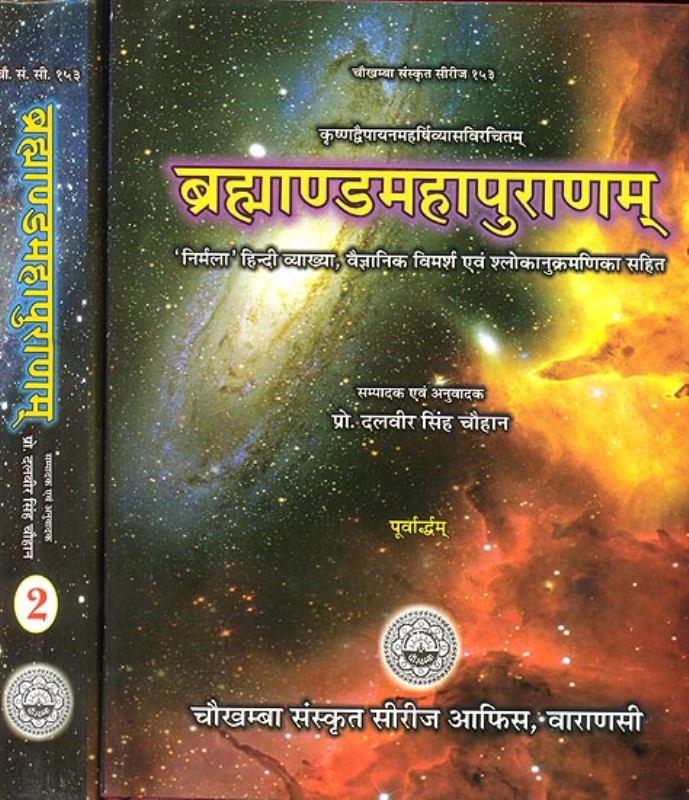The term bhakti has been usually translated as "devotion" in Orientalist literature. The colonial era authors variously described Bhakti as a form of mysticism or "primitive" religious devotion of lay people with monotheistic parallels. However, modern scholars state "devotion" is a misleading and incomplete translation of bhakti. Many contemporary scholars have questioned this terminology, and most now trace the term bhakti as one of the several spiritual perspectives that emerged from reflections on the Vedic context and Hindu way of life. Bhakti in Indian religions is not a ritualistic devotion to a God or to religion, but participation in a path that includes behavior, ethics, mores and spirituality.
It involves, among other things, refining one's state of mind, knowing God, participating in God, and internalizing God. Increasingly, instead of "devotion", the term "participation" is appearing in scholarly literature as a gloss for the term bhakti. According to Sri Lankan scholar Indumathie Karunaratna, the meaning of bhatti changed throughout Buddhist history, however. In early Buddhism, such as in the text Theragāthā, bhatti had the meaning of 'faithful adherence to the religion', and was accompanied with knowledge. In later text tradition, however, the term developed the meaning of an advanced form of emotional devotion. Examples of the latter include the veneration of Buddha Amitabha and those in the Saddharmapundrarika Sutra.
This changed the meaning of Buddhist devotion to a more person-centered sense, similar to a theist sense used in Hindu scriptures. This sense of devotion was no longer connected with a belief in a religious system, and had little place for doubt, contradicting the early Buddhist concept of saddhā. Saddhā did not exclude reasonable doubt on the spiritual path, and was a step in reaching the final aim of developing wisdom, not an end in itself. Scholars state that the bhakti movement focused on the gods Vishnu, Shiva, Shakti and other deities, that developed and spread in India, was in response to the arrival of Islam in India about 8th century CE, and subsequent religious violence. The Bhakti movement swept over east and north India from the fifteenth-century onwards, reaching its zenith between the 15th and 17th century CE. Bhakti poetry and ideas influenced many aspects of Hindu culture, religious and secular, and became an integral part of Indian society.
Sikhism was founded by Nanak in the 15th century, during the bhakti movement period, and scholars call it a Bhakti sect of Indian traditions. The Tirumurai, a compilation of hymns by sixty-three Nayanar poets, is still of great importance in South India. Hymns by three of the most prominent poets, Appar , Campantar and Sundarar , were compiled into the Tevaram, the first volumes of the Tirumurai. The poets' itinerant lifestyle helped create temple and pilgrimage sites and spread devotion to Shiva. The Alwars and Nayanars were instrumental in propagating the Bhakti tradition.
Kama connotes emotional connection, sometimes with sensual devotion and erotic love. Bhakti, in contrast, is spiritual, a love and devotion to religious concepts or principles, that engages both emotion and intellection. Karen Pechelis states that the word Bhakti should not be understood as uncritical emotion, but as committed engagement. Scholarly consensus sees bhakti as a post-Vedic movement that developed primarily during the Hindu Epics and Puranas era of Indian history (late first mill. BCE-early first mill. CE). The Bhagavad Gita is the first text to explicitly use the word "bhakti" to designate a religious path, using it as a term for one of three possible religious approaches. The Bhagavata Purana develops the idea more elaborately, while the Shvetashvatara Upanishad presents evidence of guru-bhakti (devotion to one's spiritual teacher).
The term bhakti, in Vedic Sanskrit literature, has a general meaning of "mutual attachment, devotion, fondness for, devotion to" such as in human relationships, most often between beloved-lover, friend-friend, king-subject, parent-child. It may refer to devotion towards a spiritual teacher as guru-bhakti, or to a personal God, or for spirituality without form . Bhakti in Indian religions is "emotional devotionalism", particularly to a personal God or to spiritual ideas.
The term also refers to a movement, pioneered by Alvars and Nayanars, that developed around the gods Vishnu , Brahma , Shiva and Devi in the second half of the 1st millennium CE. It was originally used in Hinduism, referring to devotion and love for a personal God or a representational god by a devotee. In ancient texts such as the Shvetashvatara Upanishad, the term simply means participation, devotion and love for any endeavor, while in the Bhagavad Gita, it connotes one of the possible paths of spirituality and towards moksha, as in bhakti marga. We'd like to highlight that from time to time, we may miss a potentially malicious software program. To continue promising you a malware-free catalog of programs and apps, our team has integrated a Report Software feature in every catalog page that loops your feedback back to us.
In early Buddhism, states Sanath Nanayakkara, the concept of taking refuge to the Buddha had the meaning of taking the Buddha as an ideal to live by, rather than the later sense of self-surrender. There are instances where commentator Buddhaghosa mentions taking refuge in the Buddha in the sense of mere adoration, indicating a historical shift in meaning. Similar developments took place with regard to the term puja and the role of the Buddha image. In Mahāyāna Buddhism, the doctrine of the trikāya and the devotion towards Bodhisattvas all indicating a shift of emphasis toward devotion as a central concept in later Buddhism.
The term Bhakti refers to one of several alternate spiritual paths to moksha in Hinduism, and it is referred to as bhakti marga or bhakti yoga. The Bhagavata Purana, for example, is a Krishna-related text associated with the Bhakti movement in Hinduism. Bhakti is also found in other religions practiced in India, and it has influenced interactions between Christianity and Hinduism in the modern era. Outside India, emotional devotion is found in some Southeast Asian and East Asian Buddhist traditions, and it is sometimes referred to as Bhatti. BlockedIt's highly probable this software program is malicious or contains unwanted bundled software. WarningThis software program is potentially malicious or may contain unwanted bundled software.
We have scanned the file and URLs associated with this software program in more than 50 of the world's leading antivirus services; no possible threat has been detected. Jainism participated in the Bhakti school of medieval India, and has a rich tradition of bhakti literature though these have been less studied than those of the Hindu tradition. The Avasyaka sutra of Jains includes, among ethical duties for the devotee, the recitation of "hymns of praise to the Tirthankaras" as the second Obligatory Action. According to Paul Dundas, such textual references to devotional activity suggests that bhakti was a necessary part of Jainism from an early period.
Nevertheless, affective devotion is an important part of Buddhist practice, not only in Mahāyāna Buddhism. According to Winston King, a scholar on Theravāda Buddhism in Myanmar, "warm, personalized, emotional" bhakti has been a part of the Burmese Buddhist tradition apart from the monastic and lay intellectuals. The Buddha is treasured by the everyday devout Buddhists, just like Catholics treasure Jesus. The orthodox teachers tend to restrain the devotion to the Buddha, but to the devout Buddhist populace, "a very deeply devotional quality" was and remains a part of the actual practice. This is observable, states King, in "multitudes of Pagoda worshippers of the Buddha images" and the offerings they make before the image and nowhere else.
Another example is the worship of the Bodhisattvas and various deities in Tibetan and other traditions of Buddhism, including the so-called wrathful deities. In later faith-oriented literature, such as the Avadānas, faith is given an important role in Buddhist doctrine. Nevertheless, faith (śraddhā) is discussed in different contexts than devotion . Bhakti is often used disparagingly to describe acts of worship to deities, often seen as ineffective and improper for a Buddhist. Also, bhakti is clearly connected with a person as an object, whereas śraddhā is less connected with a person, and is more connected with truthfulness and truth.
Śraddhā focuses on ideas such as the working of karma and merit transfer. In olden days, saints such as Mirabai, Soordas, Narsinh Mehta composed several bhajans that were a path towards Bhakti for many, that are universally sung even today. A modern age saint, Shri Devendra Ghia has composed about 10,000 hymns (a phenomenal task.) These hymns are related to bhakti, knowledge, devotion, faith, introspection and honesty. The Bhakti Movement was a rapid growth of bhakti, first starting in the later part of 1st millennium CE, from Tamil Nadu in Southern India with the Saiva Nayanars and the Vaisnava Alvars. Their ideas and practices inspired bhakti poetry and devotion throughout India over the 12th-18th century CE. The Alvars ("those immersed in God") were Vaishnava poet-saints who wandered from temple to temple singing the praises of Vishnu.
Every video uploaded, is shown on our indexes more or less three days after uploading. Our pages (everything that you see hosted on ) contain absolutely no spyware/adware/trojan/etc. According to Jeffery Long, along with its strong focus on ethics and ascetic practices, the religiosity in Jainism has had a strong tradition of bhakti or devotion just like their Hindu neighbors. The Jain community built ornate temples and prided in public devotion for its fordmakers, saints and teachers. Abhisekha, festival prayers, community recitals and Murti puja are examples of integrated bhakti in Jain practice.
Devotionalism, similar to Bhakti, states Michael Pasquier, has been a common form of religious activity in world religions throughout human history. The movement has traditionally been considered as an influential social reformation in Hinduism, and provided an individual-focused alternative path to spirituality regardless of one's birth caste or gender. Postmodern scholars question this traditional view and whether the Bhakti movement were ever a social reform or rebellion of any kind. They suggest Bhakti movement was a revival, reworking and recontextualization of ancient Vedic traditions. This verse is one of the earliest use of the word Bhakti in ancient Indian literature, and has been translated as "the love of God".
Scholars have debated whether this phrase is authentic or later insertion into the Upanishad, and whether the terms "Bhakti" and "Deva" meant the same in this ancient text as they do in the modern era. Max Muller states that the word Bhakti appears only once in this Upanishad, that too in one last verse of the epilogue, could have been a later addition and may not be theistic as the word was later used in much later Sandilya Sutras. David Lorenzen states that bhakti is an important term in Sikhism and Hinduism.
They both share numerous concepts and core spiritual ideas, but bhakti of nirguni is particularly significant in Sikhism. In Hinduism, diverse ideas continue, where both saguni and nirguni bhakti or alternate paths to spirituality are among the options left to the choice of a Hindu. We, at Gaana, have curated a Purane Gane Music Playlist which has fabulous songs, or as you say Purane Gane, from the golden era of Bollywood. This list consists of Old Mp3 Songs sung by legends from Mohammed Rafi to Lata Mangeshkar to Kishore Kumar to Jagjit Singh and many more. This list consists of 28 timeless masterpieces composed by famous composers.
The charm of these melodious songs never fades away, instead it evolves. Listening to these songs gives us a kind of peace and tranquility that is never felt before. These songs are not just famous because of their melodious tunes, but also because of the inspirational lyrics which teach us about the best lessons of life. Listen to these timeless classics on Purane Gane Music Playlist only on Gaana.com. We do not encourage or condone the use of this program if it is in violation of these laws.
Bhakti has been a common aspect of Buddhism, where offerings and group prayers are made to images such the images of the Buddha and the Bodhisattvas, or to deities such as wrathful deities. Karel Werner notes that Bhakti has been a significant practice in Theravada Buddhism, and states, "there can be no doubt that deep devotion or bhakti / bhatti does exist in Buddhism and that it had its beginnings in the earliest days". Gaana offers you free, unlimited access to over 30 million Hindi Songs, Bollywood Music, English MP3 songs, Regional Music & Mirchi Play.



















No comments:
Post a Comment
Note: Only a member of this blog may post a comment.